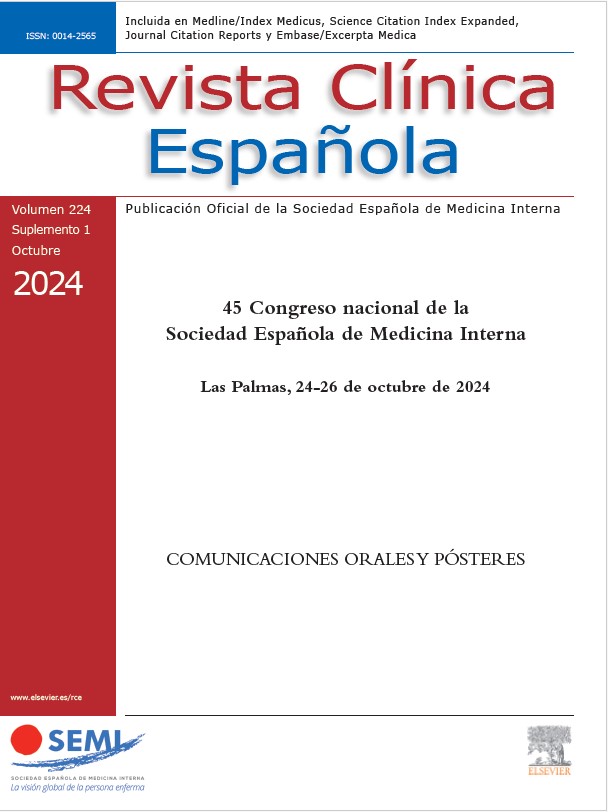. Estudiar en enfermos con úlcera gástrica la eficacia de cuatro métodos diagnósticos de la infección por Helicobacter pylori de amplio uso en la actualidad, utilizando para ello un «patrón oro» que combina varias técnicas diagnósticas.
Material y métodos. Se estudiaron prospectivamente 73 ulcerosos gástricos consecutivos. En todos los pacientes se obtuvieron tres biopsias del antro y tres del cuerpo (dos para tinción de hematoxilina-eosina y una para la prueba rápida de la ureasa —Jatrox H.p. Test—). Asimismo se realizó una serología ELISA IgG (Helico G) y una prueba del aliento con urea-C13. Según el patrón oro, un paciente estaba infectado cuando dos o más técnicas eran positivas; se consideró ausencia de infección la negatividad de al menos tres de los métodos diagnósticos utilizados.
Resultados. La prevalencia de la infección por H. pylori en los pacientes con úlcera gástrica tomando como referencia el patrón oro fue del 87,6% (IC 95%: 78%-93%). La sensibilidad y especificidad de los métodos diagnósticos fueron las siguientes: histología (antro), 96,8% (89%-99%) y 100% (66%-100%), respectivamente; histología (cuerpo), 98,4% (91%-100%) y 100% (66%-100%); prueba de la ureasa (antro), 71,8% (60%-81%) y 100% (66%-100%); prueba de la ureasa (cuerpo), 96,8% (89%-99%) y 100% (66%-100%); prueba del aliento, 100% (94%-100%) y 100% (66%-100%), y serología, 95,3% (87%-98%) y 100% (66%-100%). La sensibilidad de la prueba de la ureasa fue mayor en el cuerpo gástrico (McNemar: 15; p < 0,001).
Conclusiones. Los métodos diagnósticos evaluados (histología, prueba rápida de la ureasa, prueba del aliento con urea-C13 y serología) tienen una elevada eficacia para el diagnóstico de la infección por H. pylori en los pacientes con úlcera gástrica, con la excepción de la prueba rápida de la ureasa realizada en muestras del antro, donde esta técnica es menos sensible para la detección de la bacteria.
. To study the accuracy of four currently used tests for the diagnostic of Helicobacter pylori infection among gastric ulcer patients with a gold standard as reference which combines several diagnostic methods.
Material and methods. Seventy-three consecutive gastric ulcer patients were prospectively studied. From all patients, three biopsies each were obtained from both antrum and body (two for haematoxylin-eosin staining and one for rapid urease test —Jatrox H.p. Test—. Also, IgG ELISA serology (Helico G) and 13C-urea breath test were performed. According to the gold standard, a patient was considered to be infected with H. pylori when at least two tests were positive; a patient was considered not to be infected with H. pylori when at least three tests were negative.
Results. Among gastric ulcer patients, the prevalence of H. pylori infection was 87.6% (95% CI: 78%-93%) with the gold standard as reference. The sensitivity and specificity values were as follows: histology (antrum), 96.8% (89%-99%) and 100% (66%-100%), respectively; histology (body), 98.4% (91%-100%) and 100% (66%-100%); urease test (antrum), 71.8% (60%-81%) and 100% (66%-100%); urease test (body), 96.8% (89%-99%) and 100% (66%-100%); breath test, 100% (94%-100%) and 100% (66%-100%), and serology, 95.3% (87%-98%) and 100% (66%-100%). The sensitivity of the urease test was higher with a body biopsy specimen (McNemar: 15; p < 0.001).
Conclusions. All diagnostic tests (histology, rapid urease test, 13C-urea breath test and serology) are highly accurate for the diagnosis of H. pylori infection among gastric ulcer patients with the exception of the rapid urease test performed with antrum biopsy specimens, where this test displays a lower sensitivity for bacterial detection.
Artículo
Diríjase desde aquí a la web de la >>>FESEMI<<< e inicie sesión mediante el formulario que se encuentra en la barra superior, pulsando sobre el candado.

Una vez autentificado, en la misma web de FESEMI, en el menú superior, elija la opción deseada.

>>>FESEMI<<<






